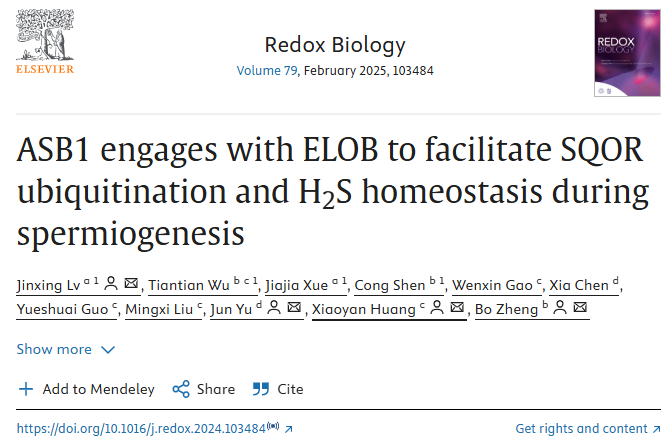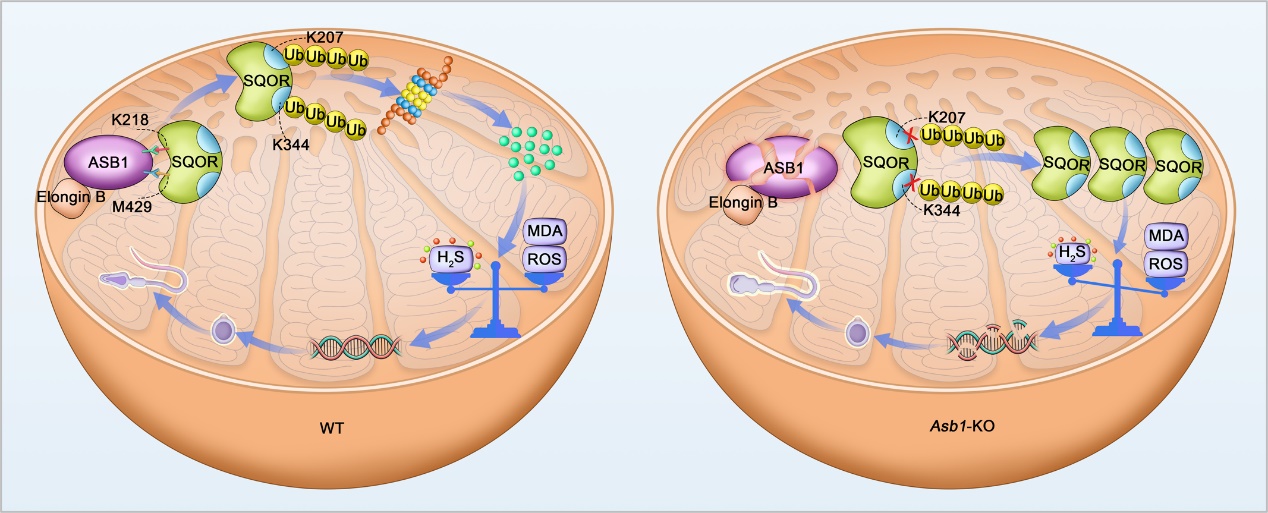
Recently, Associate Researcher Bo Zheng from the Gusu School of Nanjing Medical University (NMU) published a research paper titled “ASB1 engages with ELOB to facilitate SQOR ubiquitination and H2S homeostasis during spermiogenesis” in the journal Redox Biology. The study reveals a novel molecular mechanism by which protein ubiquitination regulates sperm morphogenesis, offering new theoretical insights into the etiology and treatment of male oligoasthenospermia (characterized by low sperm count and motility).
This study initially identified Asb1 as a highly conserved, testis-enriched gene through database analysis and transcript profiling of the E3 ubiquitin ligase Asb1. Subsequent immunofluorescence in situ hybridization showed that Asb1 is primarily expressed in elongated spermatids, suggesting its potential critical role during spermiogenesis.
To further investigate the physiological function of Asb1 in vivo, the research team generated Asb1-knockout mice using CRISPR/Cas9 gene-editing technology. Fertility tests, semen quality analysis, and morphological examinations of sperm and testes revealed that Asb1-deficient mice developed oligoasthenoteratozoospermia--marked by reduced sperm count, impaired motility, and abnormal morphology--accompanied by significantly compromised fertility.
Mechanistically, the researchers demonstrated through integrated IP-MS/Co-IP assays that ASB1 interacts with ELOB, faciliating the formation of K48-linked polyubiquitination on its substrate sulfide-quinone oxidoreductase (SQOR) at residues K207 and K344, thereby triggering proteasomal degradation. This process is critical for maintaining hydrogen sulfide (H₂S) homeostasis and redox balance. Notably, treatment with an H₂S donor significantly improved both sperm quality and fertility in Asb1-KO mice. These findings provide novel therapeutic insights into the treatment of male infertility.

Bo Zheng, Associate Researcher at the Gusu School of NMU, Xiaoyan Huang, Professor at the State Key Laboratory of Reproductive Medicine and Offspring Health (NMU), Jun Yu, Professor at the Institute of Reproductive Medicine, Medical School of Nantong University, and Jinxing Lv, Professor at the Reproductive Medicine Center of the Fourth Affiliated Hospital of Soochow University are the co-corresponding authors of this paper. Jinxing Lv and Jiajia Xue from the Reproductive Medicine Center of the Fourth Affiliated Hospital of Soochow University, along with Tiantian Wu and Cong Shen from Gusu School, NMU, are the co-first authors. This research was supported by the National Natural Science Foundation of China and the Natural Science Foundation of Jiangsu Province.
Link to the original paper: https://doi.org/10.1016/j.redox.2024.103484
(Drafted by the Department of Science and Technology, the Affiliated Suzhou Hospital of NMU; Reviewed by Wang Changjun; Translatiaon revised by Zhang Bei)



